
Tomb of Seti I: Is it worth the money?
The Tomb of Seti I is the most expensive tomb in the Valley of the Kings. You might be wondering, “is the Tomb of Seti I worth it?”. Or you may be trying to decide if you can justify spending three times the cost of the entire valley just for one tomb.
Don’t worry. You’re not alone. We were thinking exactly the same thing.
And that’s why we’ve written this guide. We’ll give you the low down on the Tomb of Seti I. Is the timb of Seti I worth it? What can you expect? Why is this tomb better than all the others (or is it?). Is this a place to splash the cash, or are you better off saving your money?
So is the Tomb of Seti I worth it? Let’s find out.
In a rush? Jump to:

Inside the Tomb of Seti I
WHAT IS THE TOMB OF SETI I?
The Tomb of Seti I is a burial chamber in the Valley of the Kings, Luxor. It was created for the pharaoh of the same name – Seti I.
But why are we writing a whole post on just one tomb? Well, the tomb isn’t included in your general Valley of the Kings entry ticket. You have to pay for an extra ticket. And the price is high enough to make your eyes water.
So, was the tomb of Seti I worth it? We’ll give you the verdict, plus what to expect from your visit to the tomb of Seti I if you decide to go, which art to look out for, and everything else you need to know for a smooth and hassle-free trip to Egypt’s Valley of the Kings.
HOW MUCH DOES IT COST TO VISIT THE TOMB OF SETI I?
When we visited, the Tomb of Seti I cost 1600 EGP to visit. That’s around £35/$40 USD at the time of writing.
That’s more than three times the cost of the Valley of the Kings entry fee, which gets you into three whole tombs! It’s also more than triple the cost of the (much more famous and iconic) tomb of Tutankhamun.
Note: The currency in Egypt is volatile at the moment and most posts are out of date as soon as they are written. You can find the most up to date prices for all Egypt’s attractions here.
So, it’s one pricey tomb! For the same price, you could see all the other open tombs. That includes the six open in the Valley of the Kings, plus Tutankhamun &Ramses V and VI (which also cost extra).
But any tomb that is considered to be so special as to warrant such a large ticket price must be dazzling, right? So what’s so special that makes the tomb of Seti I worth the cost?

Exploring the Valley of the Kings
A LITTLE BACKGROUND HISTORY
WHO WAS SETI I AND WHY IS HIS TOMB SO STUNNING?
Seti I is seen as one of the great pharaohs of Egypt. He ruled for around 12 years (~1290 to 1279 BCE). To put it into perspective, he ruled some 70 years after Tutankhamun.
The reign of Akhenaten the ‘heretic’, some 50 years earlier, had created chaos. Akhenaten had thrown Egypt into turmoil. He’d changed the national religion to centre around one god, the sun god Aten. This caused a major economic downturn. The succeeding pharaohs reinstated polytheism (worshipping multiple gods). But it was Seti I who catapulted Egypt from instability into a golden age.
The arts flourished under Seti I, with dozens of new buildings and temples constructed. Seti I also revived the Old Kingdom style art. Some of the most well-preserved art from this period and style can be seen in his tomb. He set the stage for his son, Ramses II, to be one of the most beloved pharaohs Egypt had seen!
THE DISCOVERY OF TOMB OF SETI I
Seti I’s tomb was completely decorated and beautifully preserved when Italian archaeologist, Giovanni Belzoni, busted it open in 1817. We didn’t know as much about archaeology and preservation back then. Unfortunately, Belzoni accidentally damaged some of the artwork by trying to make copies of the paintings.
The sarcophagus, one of the finest carved in Egypt, was taken (stolen) by Belzoni and now sits in the Sir John Soan’s Museum, London. Two other painted reliefs are in the Louvre in Paris, and Florence’s Archaeological Museum.
Then came Champollion, the French linguist who deciphered hieroglyphs. He cut out some of the wall decorations (!) to take back to France. After that, the tomb was closed up for almost 200 years. It wasn’t re-opened again until 2016. Now, it’s open and tourists can visit.
Interestingly, part of the tomb (Corridor K) is still being excavated. Who knows what else archaeologists will find here?
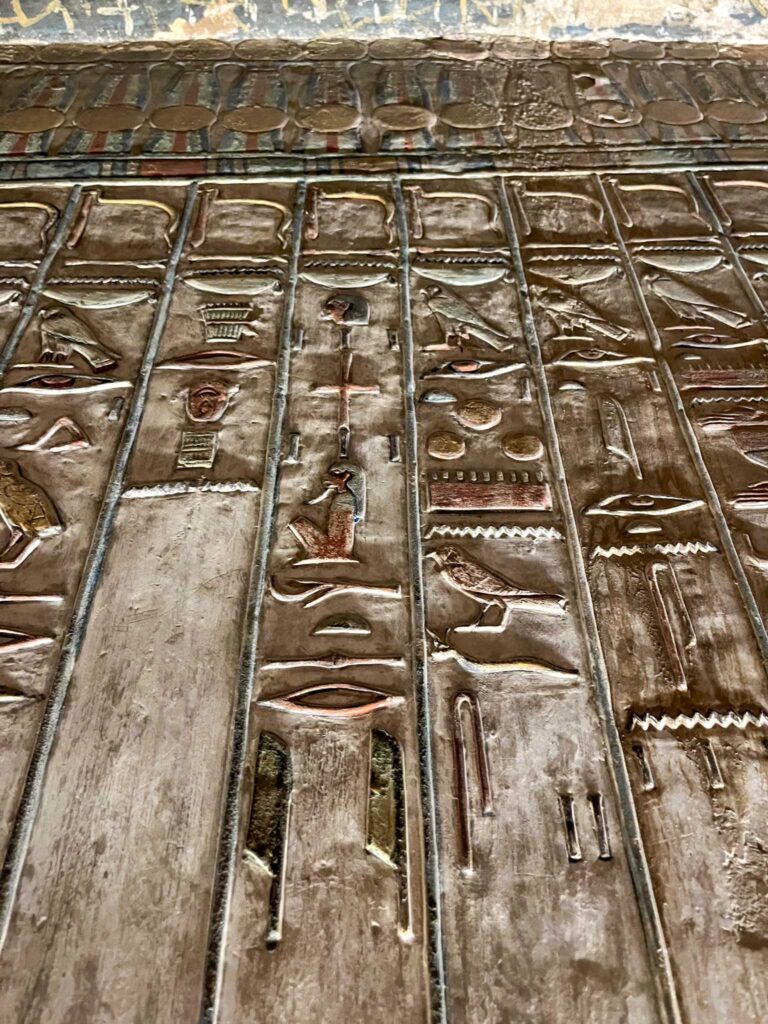
Hieroglyphs in the Tomb of Seti I – totally worth it!
WHY VISIT THE TOMB OF SETI I?
One of the greatest achievements of Ancient Egyptian art, this 137-metre (~450 feet) long tomb is by far the finest in the Valley of the Kings. With it’s vaulted ceiling and incredible artwork, is the Tomb of Seti I worth the money?
Despite the damage done by some of the original archaeologists, the Tomb of Seti I remains one of the stunning ancient tombs in the Valley of the Kings.
It’s believed that the tomb of Seti I was one of the first Egyptian tombs to be so elaborately decorated, with funerary texts, painted scenes and reliefs to guide the pharaoh into the afterlife. Some of these are unfinished, showing exactly how multiple artists laid out and brought to life the tomb decoration. The walls are filled with fabulous images from many ancient texts, including:
- The Book of the Dead (a guide to getting to the afterlife)
- The Litany of Ra (a guide to the forms and names of the sun god)
- The Book of the Heavenly Cow (a popular text in this era that describes the reasons for the imperfect state of the world)
- And more!
The decorations and paintings on the walls are unique and amazingly preserved. Unlike most of the hieroglyphs in the Valley of the Kings, which are carved into the wall, those in the tomb of Seti I are carved out of the wall, giving them a 3D effect.
And because the cost is off-putting, you’ll find not many people opt to visit this tomb. It’s the perfect place to slip away from the crowds and tour groups, take wonderful photos, and really enjoy the experience of visiting the Valley of the Kings.
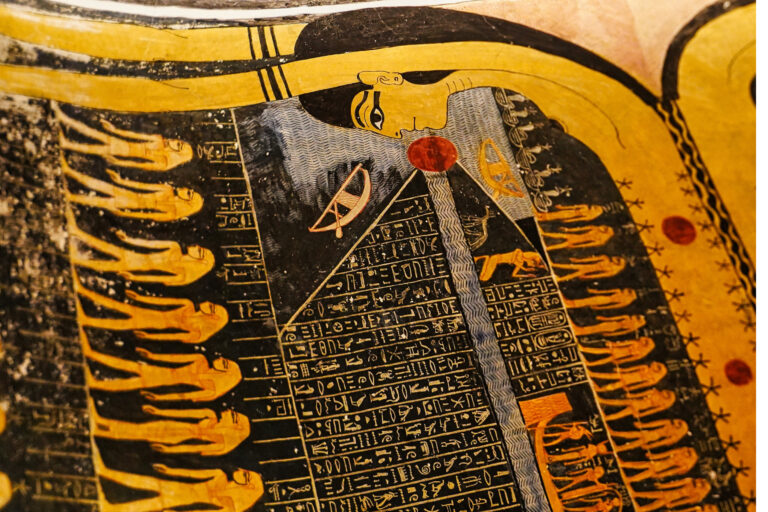
Look out for the incredibly vibrant artwork
SETI I TOMB: THE EXPERIENCE
TOMB OF SETI I: WHAT TO EXPECT?
The Tomb of Seti I is ~100m from the cafe and shops where the taktak train drops you off. It’s an easy walk to reach it, even if it’s hot. The tomb is the deepest in the valley. It might not be the most accessible (the stairs are quite steep), but if you have the money, and don’t mind a bit of a climb, the Tomb of Seti I is totally worth it!
Seti I had one of the largest tombs, with 13 rooms and corridors. And it’s a huge tomb. Climbing down the stairs makes you feel like an archaeologist amid the ‘Egyptomania’ that swept across Europe in the Early 19th Century.
We visited this tomb last, as we didn’t want Seti I’s tomb to blow our minds and make all the other amazing tombs feel sub-par. This meant we got there when it was quiet, which really added to our experience.
We highly recommend visiting the tomb towards the end of the day, or first thing when it opens. Or at least wait until the tour groups clear out (usually around midday) and people move on to other monuments.
TOMB OF SETI I: AREAS AND WHAT TO LOOK OUT FOR?
#1 THE CORRIDORS
After you descend down the steep stairs, the chamber starts in the same way as many of the others: a corridor. There are hieroglyphs along the walls, telling stories and myths. However, you will notice that the colours seem brighter and the art finer than many of the other tombs in the valley.
KEEP AN EYE OUT FOR: the exquisite carvings, and an unfinished stencil of a jackal on the first set of stairs leading into the tomb.
#2 THE FIRST HALL(S)
Eventually, you’ll reach a pillared chamber. This is interesting but nowhere near as well-preserved or impressive as the burial chamber further down. That said, it’s worth exploring this, and the side chamber to check out the unfinished artwork.
KEEP AN EYE OUT FOR: As you explore the first couple of rooms, you’ll see unfinished artwork and outlines of gods on the pillars.
This is quite rare in the Valley of the Kings, as stencils are a sign that the tomb is incomplete, suggesting that the pharaoh died prematurely.
In Seti I’s tomb there are many examples of unfinished art.
It’s a really great way to understand how the tomb paintings were made. Archaeologists think that three sets of artists were involved:
- The first set of artists drew rough outlines in red to lay out where each element of the painting would go
- A second set of more skilled artists added more detail in black
- The most skilled set of artists painted the rich colours over the top, bringing the paintings to life.
The only other tombs we saw stencils like this in were Tausert/Setnakht and Seti II. So it’s pretty unique!

A ceiling of stars
#3 THE BURIAL CHAMBER
Then, another set of stairs, and you’ll enter the main burial chamber. This is the main attraction. And it’s incredible. The chamber is low lit – enough for you to see the detail in each painting but dark enough that the tomb feels mysterious and almost otherworldly.
I loved the atmosphere in the Tomb of Seti I, more so than any of the other tombs. We were (almost) the only people visiting. When we weren’t moving around or quietly discussing the artwork, the silence was absolute. It was an atmospheric experience, exactly how I thought tomb exploring in Egypt would be!
And the artwork! Where do I even start? The paintings are exceptional and the tomb is absolutely huge, so there are so many to look at. They are (mostly) well-preserved and exceptionally detailed. As with all tombs, there’s a little damage, but what do you expect? The paintings are over 3000 years old, and looking remarkable for their age!
The detail, the vibrancy of the colours and the sheer number of paintings to look at was incredible. There’s no glass at all in Seti I’s tomb so there’s nothing between you and the paintings, which makes the experience super immersive.
BUT HOW DOES IT COMPARE TO OTHER TOMBS?
We visited most of the tombs in the Valley of the Kings (through a combination of extra paid tickets and a healthy amount of tomb guardian bribery!). And we feel confident in saying that the tomb of Seti I has the best artwork.
KEEP AN EYE OUT FOR: Images from the Book of the Dead covering the walls – an instruction manual for the pharaoh’s soul to follow safely into the afterlife. This covers the vaulted ceiling, which is full of astronomical scenes.
The Ancient Egyptians believed that the sun god Ra travelled across the sky in a solar boat each day. He was reborn each morning in the east, journeyed across the sky, and descended into the underworld in the west at night. The scenes on the ceiling depict this belief, the story told by heiroglyphs, to show Seti I’s soul how to follow the sun god into the underworld.
There are also depictions of animals and gods. The Tomb of Seti I is the only place we saw depictions of the hippo god Taweret and crocodile god Sobek in the Valley of the Kings.

Rare depictions of the Hippo and Crocodile gods
IS THE TOMB OF SETI I WORTH THE MONEY: THE VERDICT
As usual, the you only live once motto takes charge when I travel, and we splurged on the ticket to the Tomb of Seti I. And if you’re wondering if it was worth it, my answer is yes! Absolutely!
We had a particularly great experience. It was calm and cool, the atmosphere was perfect and the paintings and scale of the tomb were far better than any of the other tombs in the Valley of the Kings.
It is very expensive for a single tomb. But you can spend as long as you like here and there’s plenty of space to wander at your own pace. Unlike the other tombs, you don’t feel like you’re on a tourist conveyor belt, being constantly jostled by other travellers or getting in the way of people’s selfies.
If you decide that the tomb of Seti I is too expensive, then make sure you visit the much cheaper but still incredible tomb of Rameses V&VI. This shared tomb was another of our favourites in the Valley of the Kings!
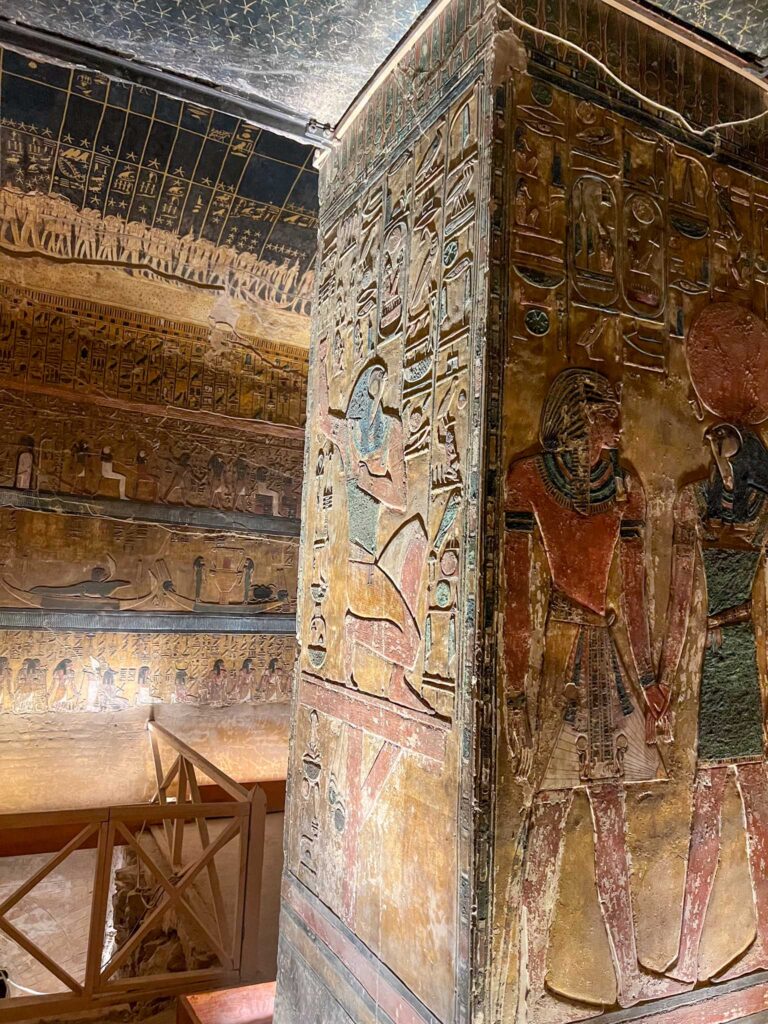
The carvings and artwork are incredible
NOTES FOR A SUCCESSFUL VISIT: FAQs
#1 WHAT IS THE TOMB GUARDIAN?
As with all tombs and temples in Egypt, there will be one or two tomb guardians.
These aren’t some Indiana Jones-style statues, rigged to send unsuspecting adventurers to their doom! Nope, they’re just people. Their job to make sure you behave yourself and respect the ancient monuments.
When we visited, there was one person at the entrance point to check your ticket, and another in the burial chamber. The tomb guardians can be a little pushy at times. They might follow you around and show you ‘interesting’ things. They may ask to take your photo. If it’s quiet, they may even open up closed areas for you to have a look at. Just note, that you will be expected to tip for any assistance, no matter how small.
Tomb guardians are paid poorly and you can’t blame them for trying it on a bit. What may seem like small cash to us can go a long way in Egypt. But it can be an exhausting experience when you just want to enjoy the tomb, and the quiet atmosphere.
The tomb guardian in Seti I wasn’t so pushy. When we were the only visitors, he did offer to open up some of the roped off side chambers in the burial chamber, all very hush hush of course! He showed us some interesting scenes and let us stay there for a few minutes. It was a wonderful experience, and felt really special.
The serenity, the artwork, and the less-pushy-than-usual tomb guardian contributed to an experience inside the tomb of Seti I that was one of my favourites in Egypt!
#2 CAN I TAKE PHOTOS INSIDE THE TOMB OF SETI I?
Rules about photography change constantly in Egypt. Sometimes all photography is allowed, sometimes only phone photography. Sometimes you have to pay for a camera ticket. And sometimes there’s no photography allowed at all.
It almost seems like a mini scam in itself, so it’s best to check the relevant websites for the areas you want to visit. If you’re not sure, it’s best to just bring your camera. Worst case, you can just put it away, wrap it in a scarf, or maybe pay a little bribe…
We got very lucky and both camera and smartphone photography was allowed throughout the tombs. The only ask was that flash was turned off.
#3 SHOULD I GET THE LUXOR PASS?
The Luxor Pass is a buy-once ticket that provides access to many of the major archaeological sites and museums in Luxor, Egypt. It comes in two main versions
- The Standard Luxor Pass includes access to most sites in Luxor, including Karnak Temple, Luxor Temple, Luxor museum, and most tombs the Valley of the Kings and Valley of the Queens. This costs USD $130/€120
- The Premium Luxor Pass also includes the Tomb of Seti I and Tomb of Neferati (Valley of the Queens). This costs USD $250/€220
If you are going to hit most of Luxor’s historical attractions, as well as the Tomb of Seti I and Neferati, you may be better off buying the premium Luxor pass.
Don’t buy the pass without first checking the exchange rate, as the Egyptian pound is currently very low against the dollar and euro. This makes the pass poorer value, and the tombs better value if you’re paying in EGP.
Currently to make the pass worth it, you must be planning to visit all premium tombs and spend several days exploring Luxor’s historical sites.
LIKE IT? PIN IT!
SAVE THIS POST TO YOUR PINTEREST BOARD TO COME BACK LATER

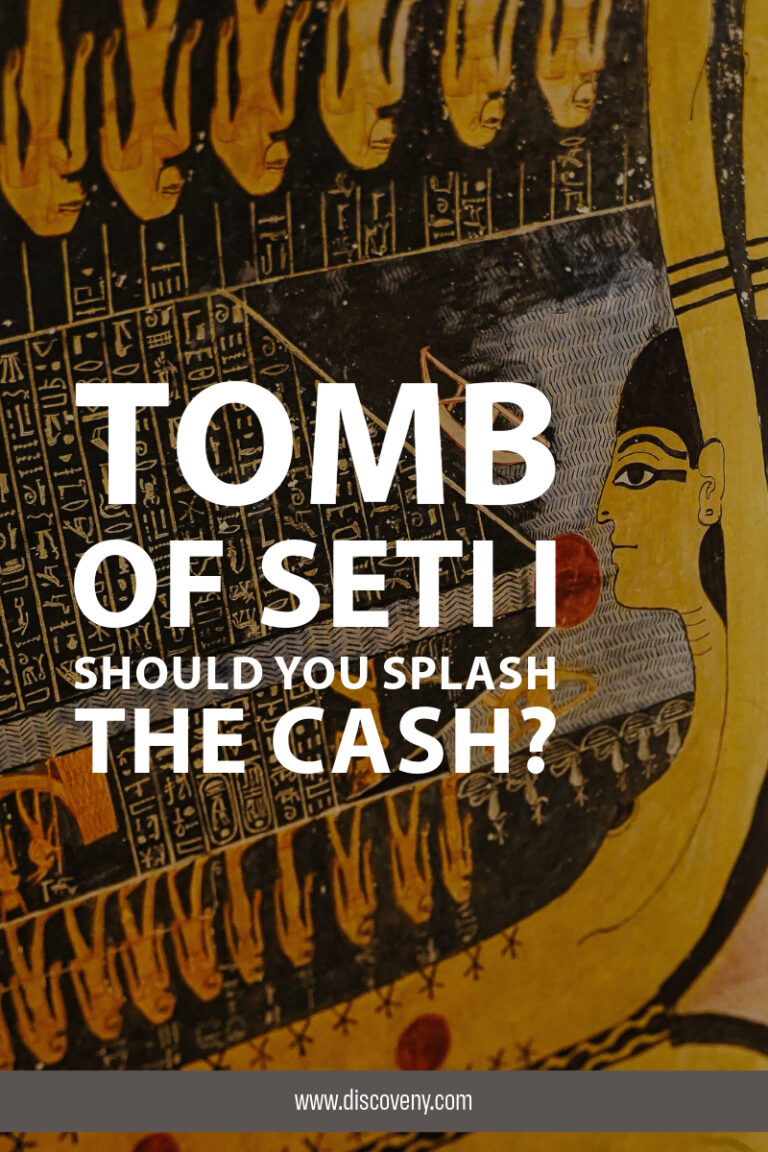
Follow our daily adventures on Facebook and Instagram
Disclaimer: The information and advice provided in this blog are the author’s opinions and based on their personal experiences. All information was accurate at the time of writing. However, things can change quickly, so always double-check current conditions and guidelines before setting out. Remember, your travels and safety are your own responsibility, and this blog can not be held responsible for anything that might happen on your adventures! Always exercise caution and good judgment. Oh, and don’t forget to get travel insurance! Happy travels!
This post may contain affiliate links (yay for transparency!) This means that I will earn a small commission, at no additional cost to you, if you click the link and choose to buy the product. I only link to stuff I have personally bought and found useful and never endorse crap. Your support helps keep the site going, thank you!
Alice
Alice is a UK travel blogger who advocates sustainable travel and being more eco-conscious on a budget. She loves coffee, her houseplants and summiting mountains.
You May Also Like

Travelling to Egypt during Ramadan: What to Expect?
June 8, 2024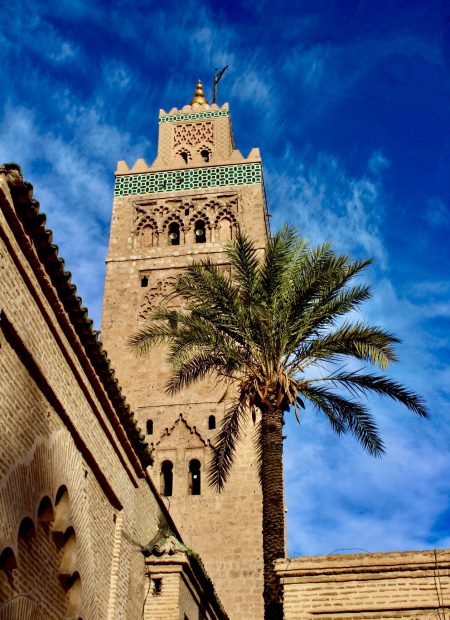
Female Traveller in Morocco – What’s It Really Like?
November 14, 2020
2 Comments
Евгений
Спасибо, Элис, за ваши советы и рассказ! Ваши фотографии – сказочные!
Alice
I’m glad it was useful for you 🙂